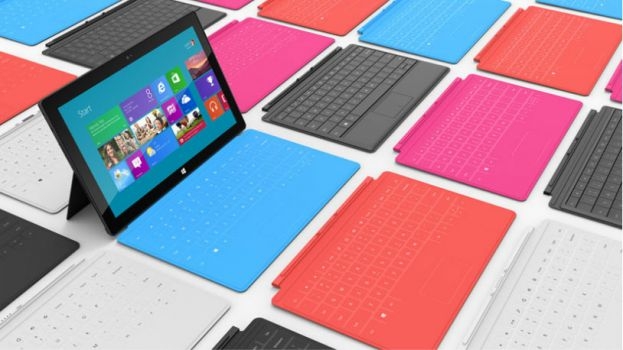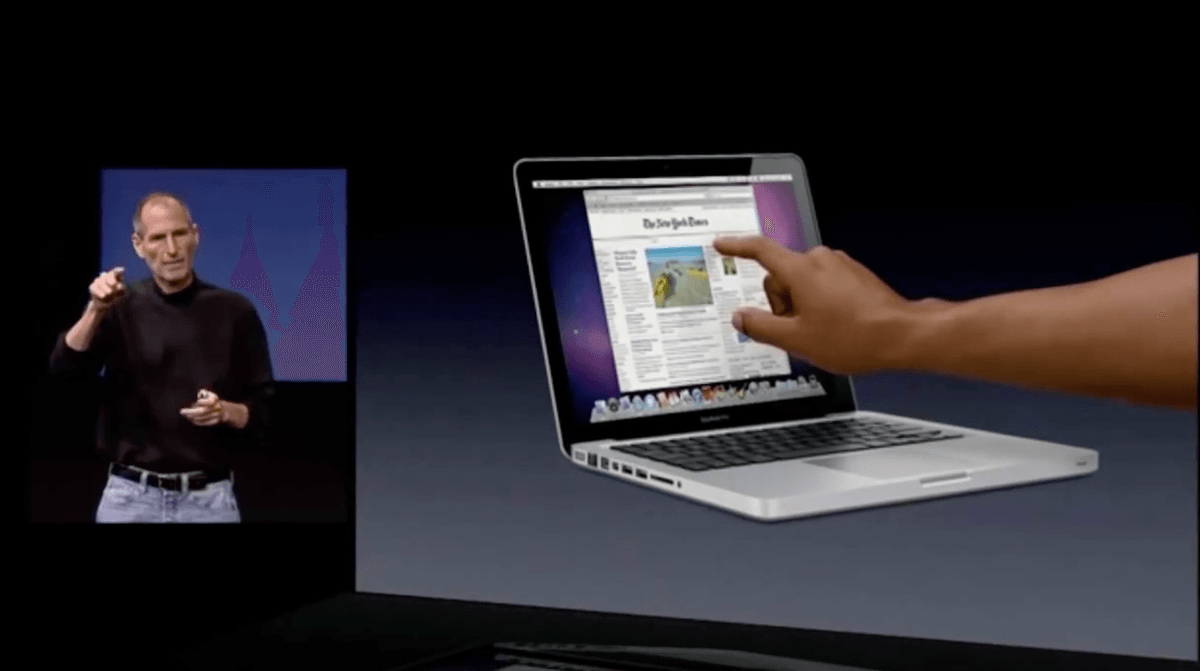Mirosoft Surface and my thoughts on tablet-laptop convergence
There are currently two tech trends of note:
- iPad sales growth was astronomical for the first few years but over the last few quarters growth has slowed noticeably.
- Microsoft is putting a lot of effort into their Surface line being currently marketed as the perfect tablet-laptop hybrid and it’s finally starting to get some interest and make some money for them (although some have pointed out that they’re still $1.7bn in the red overall on that product line).
I think iPad sales stagnation is a direct consequence of its functionality stagnation. The iPad fills niches very well (like for people who don’t like/need/never experienced a desktop operating systems), however, what you can do on a tablet that you can’t on a smartphone has stagnated and many people are still not convinced they need it when they already have a smartphone.
At the same time, there appears to be interest in some sort of device that is more powerful than a tablet but just as easy to use. Something that is as easy to use as a touch based operating system whilst still powerful like a “traditional” keyboard + mouse/trackpad operating system.
I think such a device needs a whole new user interaction model[^1].
The current two interaction models are quite distinct and I don’t believe the solution is simply taking a little from column A and a little from column B. I don’t think anyone has figured it out yet (or necessarily ever will).
The Surface: hybrid device but mostly just crap

When the original Surface was released along with Windows 8, my opinion was that it was poorly executed because it didn’t solve the hard problem of the user interaction model[^2].
Instead of being the best of both worlds, the Surface ended up being the worst of both worlds.
- Any aspect of it that was better than a tablet was completely outweighed by it being too heavy and thick.
- You had to deal with a soft-touch keyboard and kick stand. Both were things trying to solve problems that already had solutions.
- The touchscreen-keyboard hybrid interaction model was implemented very badly. A sign of bad design is that there are choices for the user when instead the designer should have just figured out the best solution. Windows 8 was the epitome of this with a desktop version of an app and a touch version. It was like someone tried to present the best bits of both then then just gave up.
Convergence is a user interaction model problem
The real problem with a hybrid device is that the user interaction model has not been figured out yet. Microsoft is dabbling in the middle, at the crossroads, and failing. Apple and Google are focusing on their touch and desktop OSs and working out how they can better integrate (not converge).
A tablet is good not just because it’s small and light but because the touch interface is intuitive. A laptop (or desktop PC) is not just a good device because it’s powerful[^3] but because the keyboard and mouse/trackpad are a dynamic combination offering precision and speed (hotkeys/shortcuts) that can’t be replicated on the touchscreen.
The hardware problem of the first Surface/Windows 8 products were inevitably going to be solved; the user interaction model problem was not. Having something small, light and thin was never the problem stopping laptop and tablet convergence. It’s not a hardware technology problem. It’s not difficult to put a touchscreen in a laptop or make a touchscreen stand in front of you. The original Surface had fans and was bulky and as generations have progressed it has become more refined[^4]. This trend will continue when Intel releases in mass quantities its delayed Broadwell processors, the Surface (and all laptops really) will take on slimmer form factors and lose their fans.
The difficulty as Steve Jobs correctly said is that touch screens “don’t want to be vertical…they are ergonomically terrible”.

The problem is each existing user interaction model doesn’t work well with the other form factor. More specifically, touch does not scale up well into complex environments; and keyboard + mouse does not scale down well into intuitive environments (as we have seen over the last 30 years).
More specifically:
- It is tiring swiping at a laptop screen that is sitting vertical in front of you when you have a keyboard on your lap.[^5]
- It is frustrating using a tablet and having to copy/paste repeatedly without a keyboard.
- It is almost impossible to do fine adjustments on screen without a mouse[^6].
On the other hand, it can be very confusing dealing with a desktop operating system - a touch/mobile operating system can be much more intuitive to use.
Each user interaction model needs to be true to themselves because they don’t scale well beyond themselves.
The likely future is not convergence but a evolved tablet
I think that the tablet is going to get better at doing the 95% of things that 95% of people need to do on a computer before someone is going to figure out the user interaction model of a truly great tablet-laptop hybrid.
It’s going to be a good enough replacement for 95% of people and they won’t need a desktop operating system anymore. We are likely to see these evolutions over the next couple of years. Things like:
-
Easier to understand file system abstractions (the iCloud model of the file lives with app was an attempt but it fails for many reasons).
-
More elegant inter-app communications that doesn’t just give the user a big list to pick which app the user wants next.
-
More intuitive interfaces for multi-tasking. Side-by-side windows may be one obvious answer but not a very good one (especially looking from the point of view of the proverbial grandparent). It introduces a whole new class of problems like: how does an app decide how big it needs its window to be? how does the user override this? will the controls for closing/resizing “windows” be on-screen and if not how will they be accessed?
All of these things will evolve and get to a point where most people will see their tablet as beyond something they just watch videos or read the web on. It will become a truly productive and creative machine. This will be all achieved by having better system software and by having better apps.
The tablet can’t be stuck at the crossroad like the Surface, it needs to decide what it wants to be. Otherwise, it will cease to exist. The smartphone will eat its bottom end and the laptop will eat the top end.
If we’re speaking in terms of tablets being post-PC product, then I think its quite clear the hybrid products currently on the market are not post-PC products. They are really just very advanced laptops with some touch goodies sprinkled on top. This is exactly what makes them crap. The laptop will instead succeed by being true to itself and Google and Apple are taking this direction in their own interesting ways.
[^1]: I don’t know if this is a phrase or not but I’m runing with it.
[^2]: This is as true for the Surface as it is for third party OEM products from Toshiba, Asus, Lenovo, etc
[^3]: Command line, keyboard shortcuts, multi-tasking, etc
[^4]: Once you put fans inside anything it ceases to be a tablet. It’s as simple as that.
[^5]: I watched someone do this on the train to work and I got tired just from watching. Type type type -> swipe, tap -> type type -> swipe….
[^6]: Althought software has handled this problem very well by presenting big dials for fine tuning.